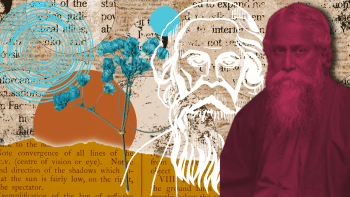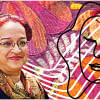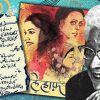On speech and literature’s silent female subjects

When Gayatri Spivak ends her groundbreaking essay "Can the Subaltern Speak?" (1988) with a definitive statement "the subaltern cannot speak", a section of literary criticism took that dictum literally—accepting the "cannot" to represent mutism or an inability to speak. In her later thought, Spivak (as well as other thinkers who have found the concept and its implications productive within various scholarly fields including postcoloniality, feminism, and identity) have redressed such a limiting interpretation of the "cannot" and clarified that it is not literal mutism that prevents subaltern subjects from speaking, but rather the conditions that render their speech impossible. Further, the "cannot" refers to systems that prevent the audibility and comprehensibility of subaltern speech acts and encourages the possibility to interpret subaltern speech acts in alternative, non-logocentric, and even non-anthropocentric manners.
The political act of speech—and it is indeed one of the foundational markers of political action as defined by Aristotle—and its gendered representation in literary works is a site that continues to receive significant scholarly and critical attention. Gendered speech acts can often reveal the inexorable link between gender and identity and the performatively constructed site of gendered female subjectivity continues to raise complex questions about femininity, autonomy, and subjection. Simultaneously, to think of speech is to think of its absence—silence. And yet in many ways, silence too, is a form of speech; it complements speech. Silence is also written; in punctuation and dashes, in gaps in pages and paragraphs, and in ellipses, silence manifests itself. Silence can be a façade—of docility, surrender, rage, incompetence, and even ignorance. What then, are some of the ways in which we can think of women's speech acts and the long, recurring tradition of women's silence in literary and fictional accounts? How does a silent woman differ from a silenced woman? If silence is an attempt to reclaim autonomy over one's speech and if being silenced is a form of violence, how do literary women negotiate, contest, grapple with their relationship with both speech and silence? What are some of the ways in which authors utilise speech and its absence to investigate relations of power, deploy meaning, and in particular, express aestheticised modes of expression that generate new, and potentially alternative modes of meaning and purpose? Is the unspoken a productive site of inquiry?
To think of speech in contemporary postcolonial literature is to turn to sites of extreme political violence where women have been rendered mute by disciplinary and authoritarian forces. Urvashi Butalia in her influential work on recovering and incorporating women's silenced voices in the 1947 Partition narratives (The Other Side of Silence, 1998) argues that keeping women's voices obscured will disallow us to confront the trauma of Partition. Silence confronts the consequences of speaking up, especially through the inclusion of oral testimonies from both men and women. In significant ways, some of those testimonies point to the ways in which during those tumultuous months, women's honour and their lives were left almost entirely in the hands of male members of their community. In a harrowing chapter, Butalia narrates two first-person accounts of a mother-son duo whose family participated in the murder of seventeen of its own female members to "protect" them. While Basant Kaur's account is profoundly traumatic, her son Bir Bahadur's account reveals some of the more complex gendered dimensions of honour and testimony. In lurid, uncomprehending detail he narrates the moment his father killed his sister and 25 other girls, making the women martyrs and the man a hero. His empathy is particular: "Even today when I remember it…I cry, it helps to lighten my heart. A father who kills his daughter, how much of a victim, how helpless he must be" (168).
Elsewhere, the contested terrain of female testimony is handled with the negative affect of revenge in Taslima Nasrin's Shodh (1993). A tale that raises questions about fidelity, women's reproductive politics, and the question of "character", Shodh is a poignant study on quiet female rage. Accused of infidelity by her husband after she conceives within six weeks of her marriage, Jhumur is forced to abort the child only for her to intentionally bear another man's child later on. As family members coo at the new baby and comment on its resemblance with its (non)biological father, Jhumur stays quiet, illustrating the quiet revenge she exacts on the family.
Reproductive testimony and the violent ripping away of the right to defend one's reproductive rights clashes hauntingly in Humanyun Ahmed's Nondito Noroke (1972). A melancholic tale of quotidian, urban middle-class life rife with disappointments and ignominies both small and large, Nondito Noroke remains one of Ahmed's strongest works thanks partly to Ahmed's placement of Rabeya, an intellectually disabled female character, at the centre of the novel's narrative tension. As Rabeya's pregnancy is revealed, her sisters and mother ask her increasingly personal questions—the initial ones probe into whether she likes someone and eventually morphs into direct questions about who helped unwrap her saree. The violation Rabeya experiences is thus twofold—her childlike, neuro atypical comportment disallows her a right to her own privacy. Rabeya's inability to speak cogently and the incoherence in her speech act do not merely mark her as a victim but rather speak to the unspeakable codes of sexual modesty expected primarily from women within our social and cultural systems. Her incomprehensible speech act bears witness to two forms of incomprehensibility—of her own incapacity to express fully her own, violent sexual past, and the conformity to sexual norms that women are expected to adhere to and how failing to do so is interpreted as a feminised form of failure.
Female silence in classic Bangla literature is often valorised as the ultimate expression of femininity. Sharatchandra Chattapadhdhay's Lalita from Porineeta (1914) perhaps is one of the more memorable heroines who exemplify quiet suffering as she refuses to speak up and testify to her secret marriage to Shekhar, who does not acknowledge her as his bride. In another manner, Rabindranath Tagore's Kadambini in "Jibito O Mrito" (1892), testifies loudly and passionately to her living status only for her speech to not be recognised as human in the conventional human-centric register when her former family desists acknowledging her as a living being. As a distraught Kadamnbini jumps into a pond to kill herself, her final testimony of her aliveness is made comprehensible, but only in death. The silence of death confirms her previous alive status. So unyielding the register for speech often is in its man-centric formations, women's silence and screams both remain alien to it.
Such silence is expected from women—consider the ways in which culturally even now women's voice and laughter are meant to remain in the ondormohol and not be heard in the bahir. In her 1978 discussion on "'The Transformation of Silence into Language and Action", Adrienne Rich names the destructive forms of silencing women experience as "namelessness, denial, secrets, taboo subjects, erasure, false-naming, non-naming, encoding, omission, veiling, fragmentation, and lying". Rich points primarily to racialised forms of silencing and the ways in which white feminism's inability to listen to and comprehend non-white, black, indigenous and marginalised women's voices speaks to the denial and negation of nonwhite female experience within a white register. In a definitive attempt to resist such whitewashing of black speech in Sherley Anne Williams' Dessa Rose (1986), the protagonist Dessa weaponises her silence as well as her speech against Nehemiah, the young white journalist who wants to tell her story. As Dessa stands accused of inciting a slave rebellion and killing a white man, she refuses Nehmiah a chance to represent her, to speak for her as she presents him her memories through silence, scraps of jumbled recollections, and confused remembrance. She denies his hegemonic power its ability to write the history of the black, female other. Dessa swallows her own words, distorts her own memory, and refuses the white slaveholder the chance to articulate for her. For Madhabilata however, in Samaresh Majumdar's Kalpurush (1985), her silence protects the father of her unborn child, a Naxalite insurgent in hiding. As the police torture a heavily pregnant Madhabilata, she refuses to reveal the location of Animesh, allowing her silence to act as a powerful form of protestation and female grit.
Yet, questions remain, why are so many literary examples of female silence emancipatory but only in death? Consider the lovesick, suicidal silence of Dilu in Ahmed's Amar Ache Jol (1985) or the obhimani, suicidal silence of Apala in Aakash Jora Megh (1988). Such romance of suicide bears witness to the trauma of both characters in Ahmed's work—for 15-year-old Dilu, it is the agony of unrequited first love, and for Apala, the secrecy around her birth, of being sold into adoption, and discovering devastating filial truths. Both women refuse to speak to their trauma, their woundability, and their pain. Yet in death, both of their bodies speak; suicide reveals the unsayable. In many ways the aesthetics of withheld words, hidden pain, and injurious thoughts are revealed in Ahmed's work through the coupling of suicide and silence, all done in an effort to say the affectively unsayable.
Susan Sontag argues that "among its many uses, speech can enlighten, relieve, confuse, exalt, infect, antagonise, gratify, grieve, stun, animate". She adds that "silence—like speech—has its more specific, inevitable uses, too". One such use of silence for me now is the seeking of quiet—the quieting of one's own active, anxious mind, a quiet place, the quiet stillness of serenity, the beauty of quiet calm. While being silenced remains a form of oppression and a violation of women's right to exist, and speech an act of power, it is now the quiet I seek more and so too, I think, do many of the women this essay speaks of.
Nazia Manzoor teaches English at North South University. She is also Editor, Daily Star Books and Literature. Reach her at [email protected].

 For all latest news, follow The Daily Star's Google News channel.
For all latest news, follow The Daily Star's Google News channel. 









Comments